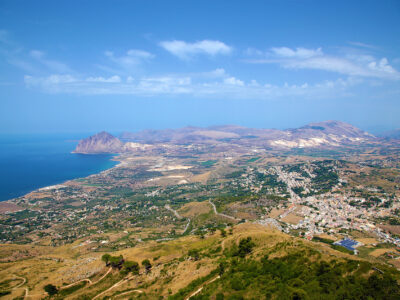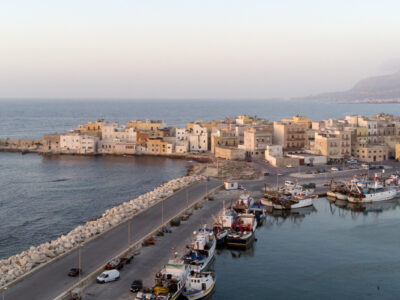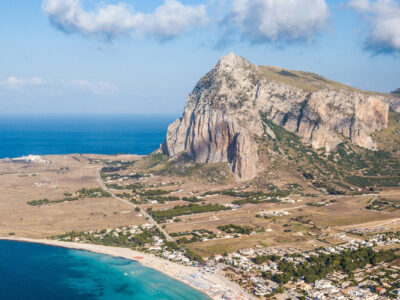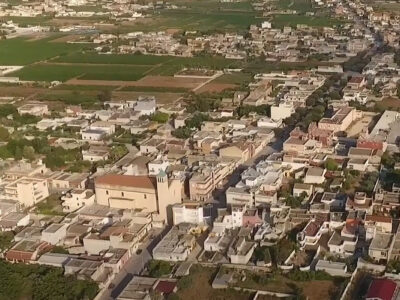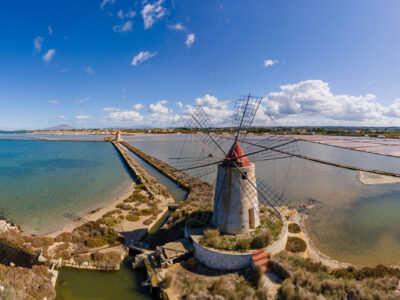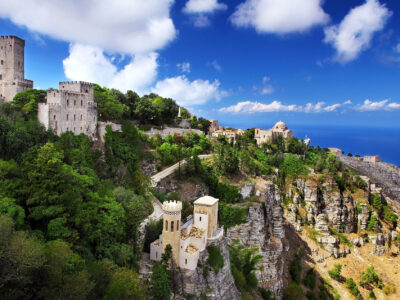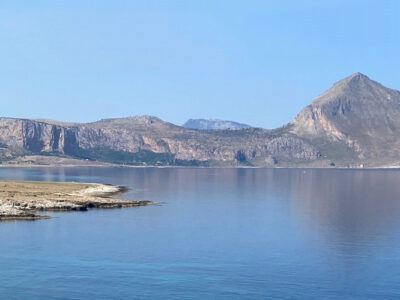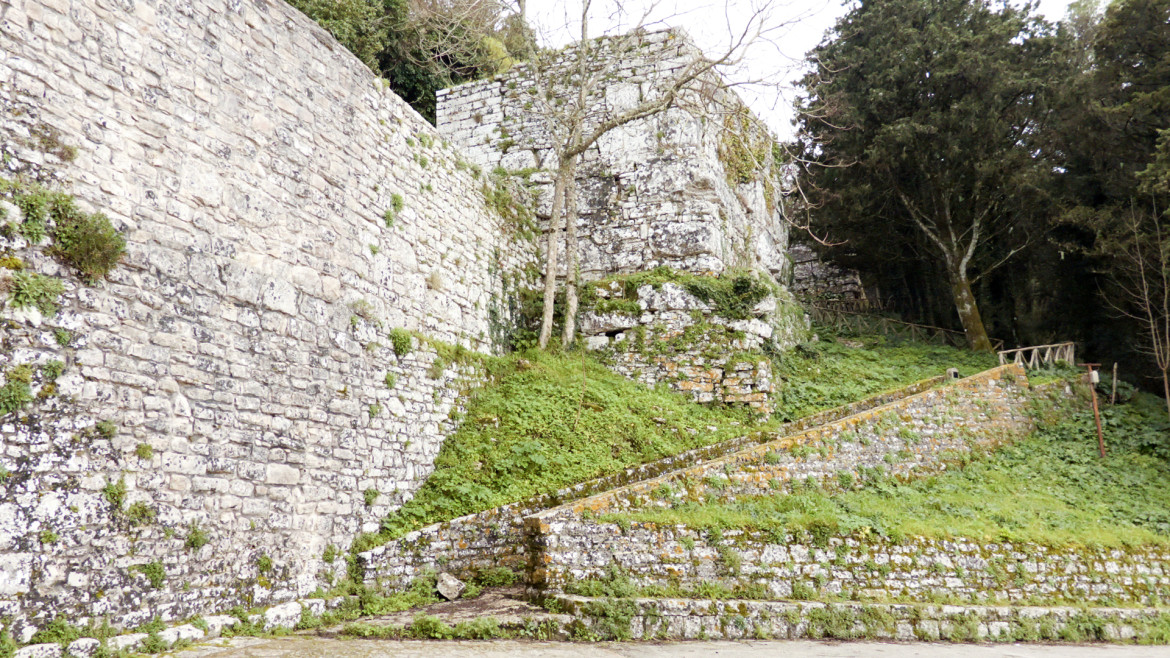The ancient walls, made of limestone, were originally built on the north-eastern side in the 8th century b. C. by the Elymians, a population of uncertain origin; later, in the 6th century b.C., they were reinforced by the Carthaginians and, after reconstructions in the Roman age, completed by the Normans.
The remains stretch along a way of about 700 meters and adapt themselves to different terrains (from 682 meters to 729 meters above sea level).
Due to their gigantic dimensions they are known as “cyclopean walls”; the Greek historian Diodoro Siculo, also, indicated Dedalo as their first builder.
Along the city walls can still be seen:
- 16 quadrangular towers (they originally were 25) connected to each other by solid intermediate curtains, with an average length of 45 meters and thickness of about 2,30 meters;
- 3 gates called Trapani, Carmine and Spada;
- 6 posterns (secondary gates in a fortification).
Big calcareous blocks, dating back to Elymian times and forming the base, can also be seen; they have been left in their natural state, well squared and similar rows of ashlars, dating back to Phoenician-Punic times, rest on them. In the upper levels the construction continues with other medieval rows made of small stones, with an irregular shape, held together by mortar and with vertical wedges, with a horizontal course.
Along the curtains open several posterns, small doors used as emergency exits or for supplies, today they have remained 6 (well-preserved): the oldest have solid monolithic architraves, the others false arches. Close to some of them there are, engraved into the stone, the letters of the Punic alphabet:
- “beth” that is “house”
- “ain” that is “eye”
- “phe” that is “mouth”
These letters may have the following meaning: “The walls have eyes to see the enemy, a mouth to eat him when attacked and they are the safe house for the inhabitants”. The presence of these letters confirms, from a chronological point of view, the Phoenician involvement.
The numerous restorations and renovations in the Roman and medieval ages, characterised by the small dimensions of the material used, have changed the original appearance of the city walls as well as the three entrance gates to the city.
- Porta Trapani: so named because it looks towards Trapani. It has an ogival shape and is placed between two solid bastions.
- Porta Spada is situated in the northern part; its name is due to the massacre of the Angevins who were occupying Erice during the Vespers War (13th century).
- Porta Carmine is located in the square opposite the Chiesa del Carmine (Church of Mount Carmel) and on it there’s a large niche with a calcareous headless statue of St. Albert.






